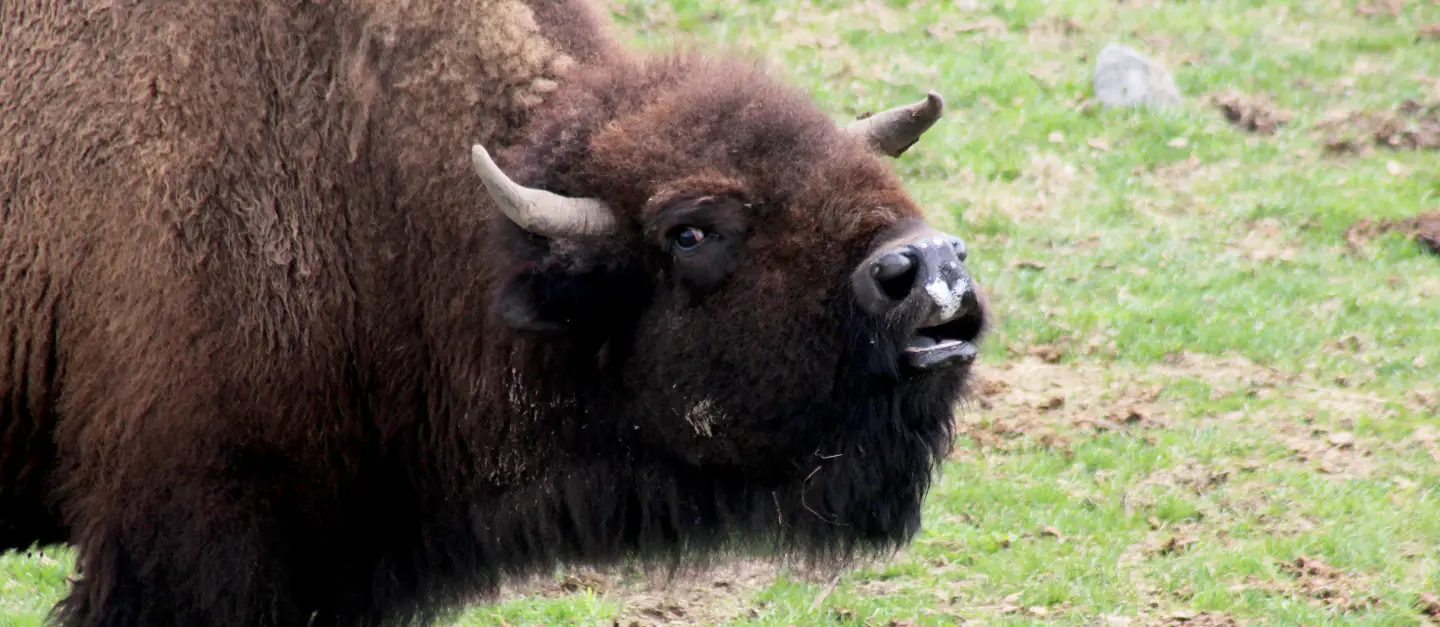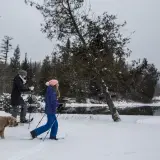A bison herd is a peculiar site in the eastern United States, but in the Adirondacks anything is possible.
Take Exit 29 off of Interstate 87 and drive west, toward Newcomb, for about 4 miles. Just after the Branch River leaves your side, the evergreen-laden forest opens to reveal about 40 bison in a large pasture — that's the Adirondack Buffalo Company's herd.
Two hundred years ago, it wasn't strange to see the animals scattered across the American landscape. The massive ungulates dominated the terrain from Central New York through the Midwest, and north into Alaska.
Early European settlers brought the species, which once boasted about 60 million individuals, to the brink of extinction. Old sepia-toned photographs of house-sized piles of bison skulls grant perspective to the magnitude of the slaughter, which decreased the animal's numbers to about 300 by 1900.
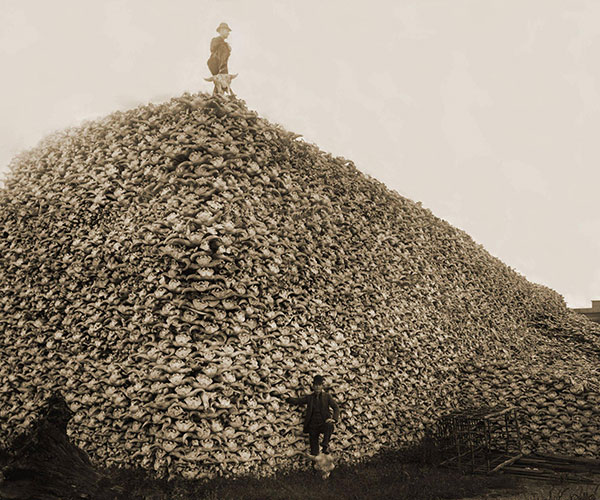
Bison have since made a slow and steady comeback, and now their population is a few hundred thousand. That's not bad for an animal the International Union for Conservation of Nature called a "conservation dependent species." Their range isn't close to what it used to be, but the threat of extinction has mostly dissipated.
The historical range of bison never extended into these mountains, but the beasts — the deceptively placid and gentle-looking creatures — look right at home against the Adirondack backdrop.
An open plain is rare in these parts, and this one is bordered by two fences. The double fence serves two purposes: The tall inside fence keeps the bison from escaping, and the shorter outside fence keeps people from getting too close to the bison. The height of the inside fence isn't an accident. The 1,400-pound animals can run 40 miles an hour and jump about 6 feet high.
"People don't have a concept of how strong and fast they are," Dorreen Ossenkop said. "They think they're these big, ponderous animals. Oh, no. They'll outsprint a quarter horse."
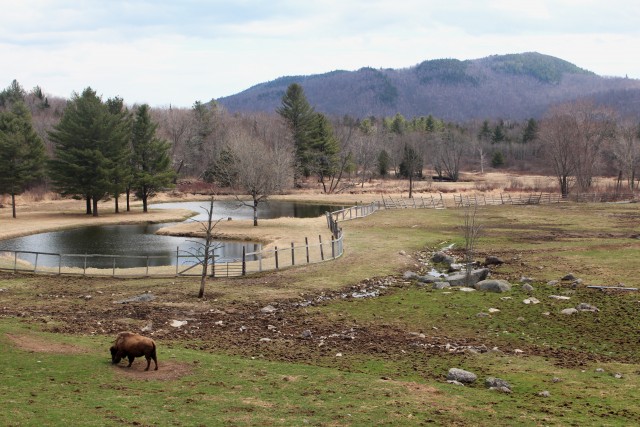
Dorreen and her husband, Steve, opened the Adirondack Buffalo Company in 1990. Standing in the gift shop, which overlooks the bison arena, Dorreen said she's seen the animals in action. One day, a particularly determined female decided the grass looked better on the other side of the fence, so she leaped over it. Steve set about making the fence higher, and the next day Dorreen watched as the same bison slowly surveyed the perimeter.
"She walked all the way around until she found one spot where there was no extra board, and she did it again," Dorreen said.
Steve was born and raised on a dairy farm, but he was always fascinated by bison. About 25 years ago, the couple decided to go for it. They wanted something different, and that's what they got — the creatures are intelligent, curious, and surprisingly agile.
"Most animals will pivot on their front feet or back feet; buffalo will pivot on any foot," Dorreen said. "I have on two occasions seen them get startled by something, and they jump up in the air, and when they hit the ground running they're facing in the opposite direction. They're like a cat. They do it so fast you can barely see the movement."
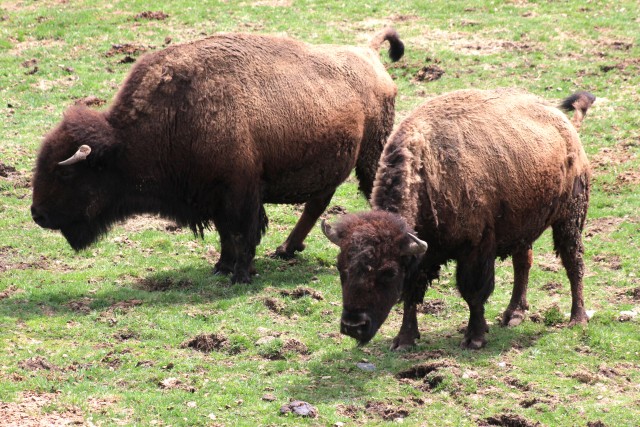
Once bison put some distance between themselves and whatever startled them, they turn to face it. That's when they determine whether to ignore, flee, or attack. One of the times Dorreen saw this play out, the bison picked the first option and went about their business. The offending animals were Canada geese that broke into a hissing, honking fit when the inquisitive bison wandered too close.
A herd of bison is not a random assortment of animals. There's a social hierarchy that determines which individual gets the best resources available. If the dominant female likes the look of a spot another bison is lounging in, it will yield to her when she approaches. The dominant female also gets first dibs on food, and when she's finished she'll move on to the next best batch, leaving whatever's left of the first for whoever's next in the pecking order.
In nature, those lower on the ladder could go hungry. The Ossenkops can't let that happen — they have a business to run — so everyone eats.
When the animals are old enough they're sent away to be processed, and the meat is sold at the shop, along with things like jams, pies, cookies, sauces, quilts, furniture, books, and dairy products. It's a smorgasbord of mostly Adirondack-themed items and just like the bison, most of it is produced locally.
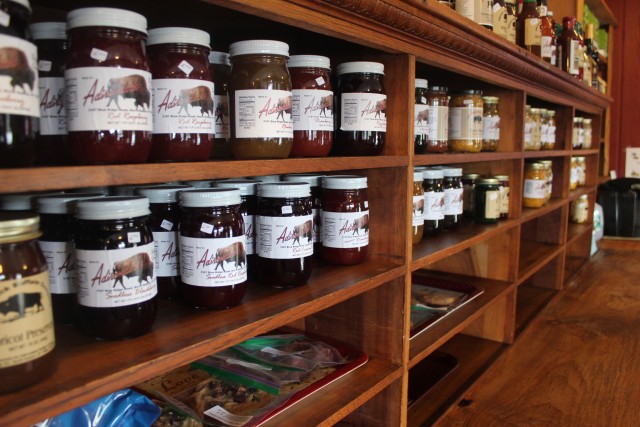
In the summer, there's even a display straight out of a farmers' market that's loaded with fresh produce.
Dorreen explained that the Adirondack Buffalo Company is more than a bison farm — it's a place where local artisans can sell their wares and where visitors can observe the curious creatures from a safe distance.
The Adirondack Buffalo Company is conveniently located on the way to other regional delights. Stop by the next time you decide to hike, paddle, or attend an event in the Schroon Lake Region.
